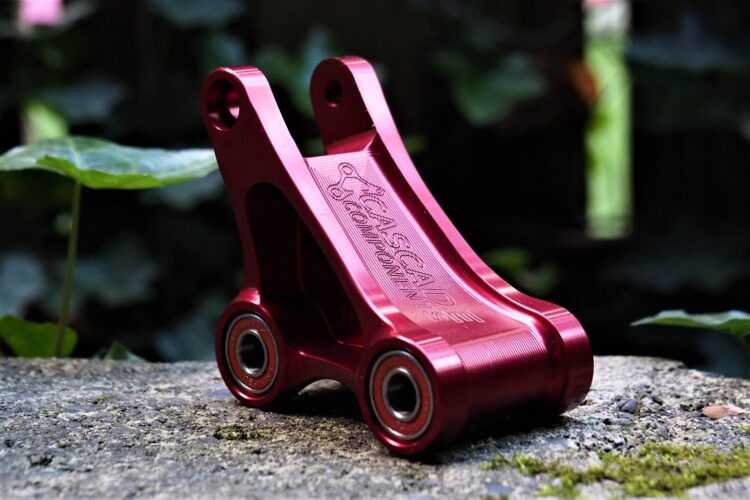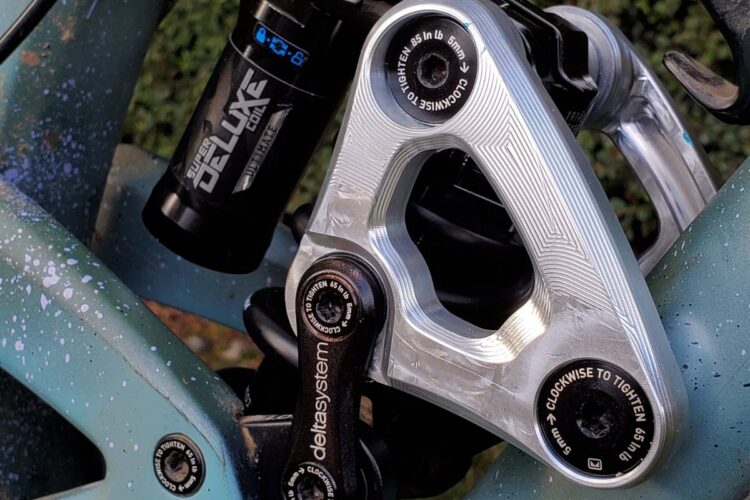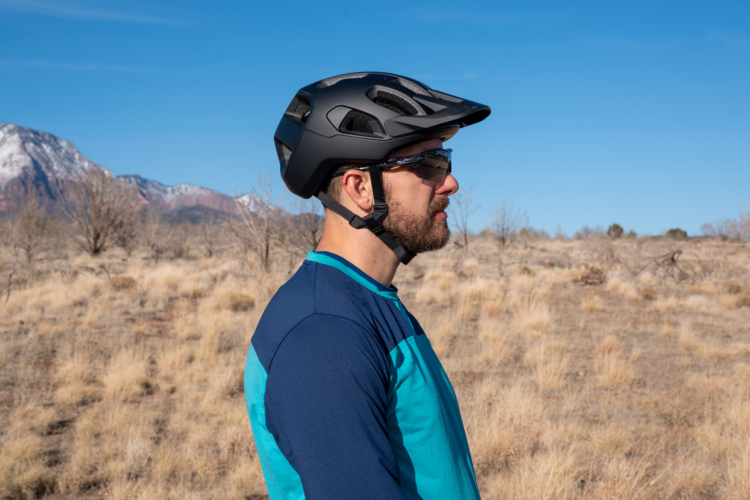
Have you ever wished that your trail bike had a touch more travel? Maybe you’d like to install a coil shock but the stock progression curve would leave you with clapping bottom-outs on the regular? Cascade Components, hailing from Everett, Washington, tackles these rider desires and more with their beautifully CNC’d aftermarket suspension links.
The company’s initial aim is to design links that offer significant improvements for already well-designed full suspension bikes. Travel increases are a secondary concern, though all of the Cascade links do increase travel to some degree.
Link engineer and manufacturer, Jimmy Davis, kicked off his young curve-shifting company after a small trail catastrophe. “I had broken the rear triangle on my Santa Cruz Nomad, and as I was hiking out I had a lot of time to think about the back end of my bike. I thought it would be cool to tinker with the kinematics. I wasn’t really seriously thinking about it at that point. Then, right after that, the Seattle area had this big snowstorm, by Seattle standards. So I had some time to actually do it. I sat down and worked through all the kinematics for the bike and then designed the link and went and rode it.”

Jimmy wanted to use a coil shock on his Nomad, and at 5’8″ and 16lbs. he had to install a 500lb. spring to achieve proper support without frequent bottom-outs. That high spring rate made the bike ride high in its travel, and he wanted to correct the sag so that the rear end would use full travel without bottoming out, and so he could use a lighter spring for better traction and small bump sensitivity. The Cascade Nomad Link bumps travel up to 190mm when combined with a 230mm x 65mm shock, or 177mm of travel with stock 230mm x 60mm shock. The link also adds 6mm of chain stay length by increasing the space between the front and rear triangles, making the bike even more stable and speed-friendly.
A Nomad link is said to create “a more progressive leverage curve, increase travel, and lengthen chain stays all while maintaining stock pedaling characteristics.” Jimmy says that, while the progression increase is significant it does not undermine the custom tune of a bike’s shock. All of the external settings on custom shocks should continue to create a functional range of adjustment with a Cascade Components link installed. The links are said to create a far more noticeable difference than adding volume spacers to an air shock, and according to Cascade Components “It’s like new bike day in the best way.”
Cascade Components create links for bikes that they really like but would like to see work a little differently. Much of their selection process is driven by customer requests. Once they have enough requests for a link they have to get ahold of the bike, run all of the equations to see if they can make the desired changes to the link, test prototypes for frame fit and linkage compatibility, and then go test it on the trail. If it works well, the link goes into production.
What’s the largest change they have made to a bike with one of their links? Jimmy said that it’s a tossup between the original 140mm Transition Sentinel and Kona Process 153. “While [both bikes are] progressive, they’re not very progressive by today’s standards.” The Sentinel LT Link lifts the end of the leverage curve from 7% to 20%, helping the bike play better with the linear spring curve of a coil shock. On the travel side, “with the stock shock size, travel is increased to 146mm. The carbon frame has more clearance and can run up to a 205×62.5mm shock for 158mm of travel.” So, this link can kick the rear end of a Sentinel from the base of acceptable enduro race travel at 140mm up closer to the new Sentinel model’s 150mm travel range, with a little time and cash investment.

On the geometry front, some bikes like those from Santa Cruz can see meaningful geometry shifts with a link swap. In addition to moving the rear triangle back, there are ways to optimize a link for mullet setups. Cascade has a “Mullet Link” for the V2 Santa Cruz Hightower that allows riders to mount a 27.5″ rear wheel in the 29er frame to check out the benefits of dual-diameter rolling. The Mullet Link raises the Hightower’s BB by 12mm, which remains lower than the stock BB height, but Jimmy says “it’s as far as you can stretch it with only one link and not compromise the kinematics.” Remember that as the link grows in size the leverage between the front and rear end also increases, and if you’re trying to make the leverage curve more progressive you don’t want to give the axle a longer lever to push on. This “best compromise” is said to give the bike a more progressive leverage curve compared to stock, slightly more travel, and 5mm longer chainstays, all while holding the head tube angle at 65°.
All of the links are designed and manufactured by Jimmy at his lab in Everett, Washington. The shavings and leftover bits of aluminum are 100% recycled, leaving minimal waste on the production floor. The brand has decided to use stock linkage bearings whenever possible to make it easier for customers to find replacements. Additionally, if you purchase a linkage bearing kit from your bike’s manufacturer, it’s best to have all of the correct sizes ready to install. A few of the links, like the most recent Kona Process 153 addition, receive larger bearings where Jimmy feels that they can extend the linkage service intervals.

Some brands like Transition Bikes are upholding their frame warranties for broken bikes with Cascade Components links installed, as long as the break isn’t caused by the aftermarket link, while others have stated that swapping the link voids the warranty. Santa Cruz Bicycles has stated that anyone with a Cascade link installed has voided their frame warranty. It seems notable that changing this one component would void the frame warranty, while every single other component on the bike can be swapped out and the warranty policy upheld. This factor is worth considering if you want to swap the link in your frame.
While Jimmy has a lot of engineering projects waiting in the wings for Cascade Components, the next bikes in the link queue are the Yeti SB140, the Evil Offering, and the Specialized Enduro. The Enduro sits at 25% progression with the stock link, which works well for most riders. The aim of a refined link with that particular long-travel race bike will be to increase the progression to around 35% so that owners can ride with a larger amount of sag for better root-smoothing properties while maintaining ample bottom-out support.
Head over to the Cascade Components site to learn more, and to see if a link might make your capable whip even better.






















4 Comments
Oct 22, 2020
Oct 22, 2020
The head engineer, Jimmy, replied via email.
"The bottom bracket height on the Evo remains unchanged with the link. The reason for this is that the same link is used on the standard Stumpjumper models as well. We wouldn’t want to raise the BB for those so, as a result, the BB for the Evo also stays the same."
Oct 22, 2020
Oct 23, 2020